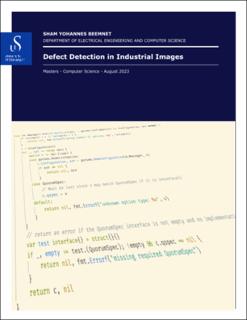| dc.description.abstract | This thesis aims to identify defects in industrial images using Printed Circuit Board(PCB) images. Defect detection in industrial images is crucial in this era that we are living in today. There is a rising demand for automated ways to detect and classify defects in the place of labor that are becoming less available and more expensive. Additionally, this will enhance the output and raise overall product quality.
This thesis presents a method for detecting defects in PCB images utilizing autoencoders, variational autoencoders, convolutional neural networks, and classifiers like K-Nearest Neighbours and Random forests. The study's primary objective is to feed the classifiers with data from the autoencoder's latent space before passing it to the decoder to reconstruct the image and determine the results. Different models with varied hyperparameters and architectures train the different autoencoders.
The study's findings indicate that The VAE with convolutional neural network performed best from the four methods used in this thesis with 98.5\% accuracy. This result means that using the latent space before the data gets reconstructed in the decoder to train a model and classify defects proved better than using autoencoders in the conventional sense in the case of the Convolutional Neural network. | |
